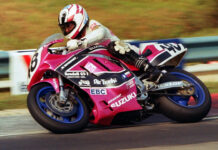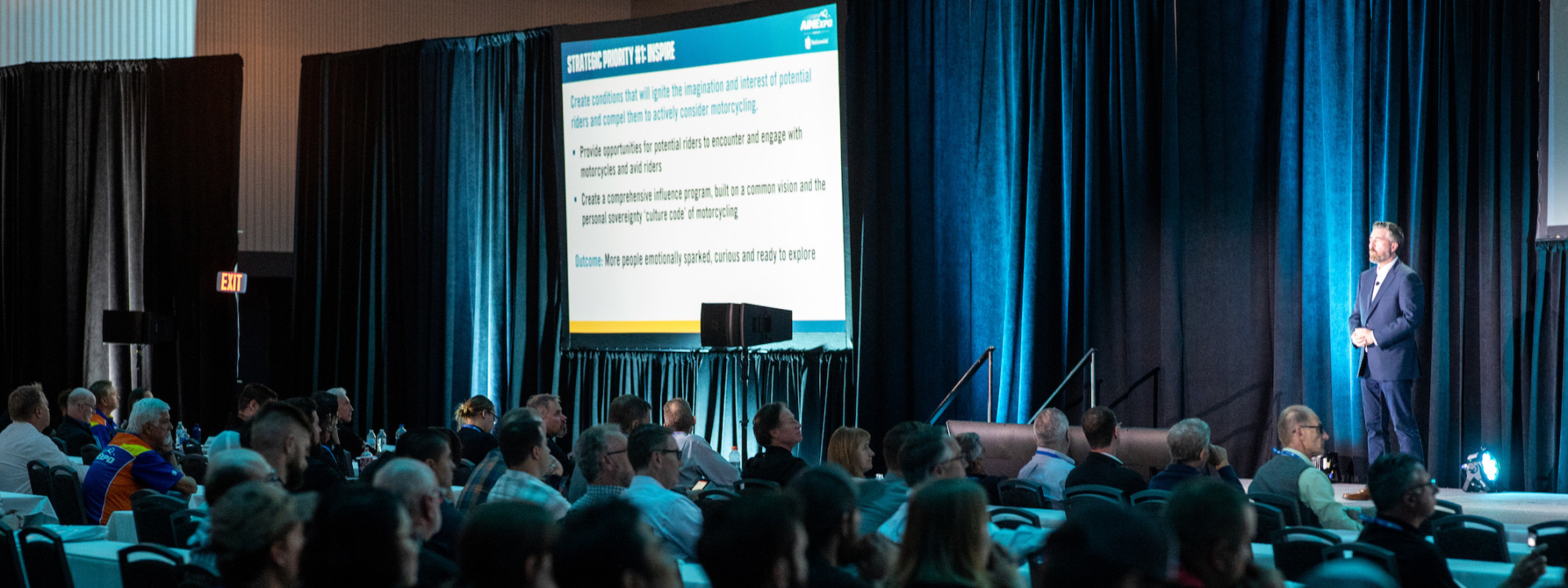Industry-Wide Initiative to Get More Riders, Riding More, Presented by Motorcycle Industry Council Leadership
COLUMBUS, Ohio – The Motorcycle Industry Council presented the strategic framework for the long-term, industry-wide effort designed to boost ridership, get more riders, riding more, last week at the opening session for AIMExpo presented by Nationwide.
Opening day for the nation’s biggest motorcycle show saw a packed ballroom at the Greater Columbus Convention Center, filled with hundreds of dealers, manufacturers, aftermarket companies, service providers, rider training professionals, and many others across the industry. Speakers revealed new findings about the “culture code” of motorcycling; how Americans relate to motorcycles, which is critical in understanding how to reach potential new riders. And speakers provided details about new research into the four steps on the journey to becoming a motorcyclist.
“This industry-led program will enable all stakeholders to benefit,” said Paul Vitrano, MIC board chair, and senior assistant general counsel of Indian Motorcycle and Polaris Inc. “The MIC is developing this to bring the might of the entire industry together, in order to power our collective future.”
MIC leadership urged everyone throughout the industry to unify, support the initiative, engage with it, and send questions, comments, and suggestions to [email protected]. An action plan and an initial set of tactical elements will be presented at the annual MIC Communications Symposium in Long Beach, Calif., on Nov. 21.
The presentation was led by Vitrano, MIC Vice Chair Chuck Boderman of American Honda Motor Co., Inc., incoming MIC President and CEO Erik Pritchard, and long-time motorcyclist and media personality Ariana Escalante.
“We conducted exhaustive research into the key drivers that underlie our industry,” Vitrano said. “We knew we had to dig deeper and go further than anyone had previously gone into the real issues that motivate people to ride – and even more important, what keeps them from riding.”
After months of intense, collaborative work with consulting firm Centauric, it was clear that “potential consumers not only exist, they might actually be out there waiting for us to find them,” Vitrano said.
To reach these potential riders, the MIC worked with Centauric to understand the culture code of motorcycling in America, and to identify the four steps on the journey to becoming a rider.
Information gathered in focus groups, lab experiences, and other research “allowed us to discern our most critical understanding,” Boderman said, “the distillation of the culture code of motorcycling in America, which can be summed up in two words: personal sovereignty.”
The culture code is “comprised of independence, power, mastery of both self and domain, and being at least a little bit bad-ass about it,” he said. “Personal sovereignty is the essential key to understanding how to powerfully connect with potential riders. It is how most Americans subconsciously relate to motorcycles.”
“We need more riders, riding more,” Pritchard said. “Potential riders are on a journey, and it’s our job – all of us – to provide a roadmap and help them along the way to make sure they reach the destination.”
Four key steps were identified on the journey to becoming a rider:
Inspire – Get more people to take notice of motorcycling
Explore – Help more people learn about motorcycling in a way that aligns with their lifestyle and personal interests
Engage – Knock down barriers and welcome new folks
Integrate – Make motorcycling accessible, affordable, and enriching
“We are working to refine these elements into an action plan,” Pritchard said. “Our industry is at an essential turning point, where we must unify as one body, speaking the culture code of motorcycling, and pulling in the same direction to create new riders.”
The Motorcycle Industry Council exists to preserve, protect, and promote motorcycling through government relations, communications, and media relations, statistics and research, aftermarket programs, development of data communications standards, and activities surrounding technical and regulatory issues. As a not-for-profit national industry association, the MIC seeks to support motorcyclists by representing manufacturers, distributors, dealers, and retailers of motorcycles, scooters, ATVs, ROVs, motorcycle/ATV/ROV parts, accessories and related goods and services, and members of allied trades such as insurance, finance and investment companies, media companies and consultants.
The MIC is headquartered in Irvine, Calif., with a government relations office in metropolitan Washington, D.C. First called the MIC in 1970, the organization has been in operation since 1914. Visit the MIC at mic.org.






